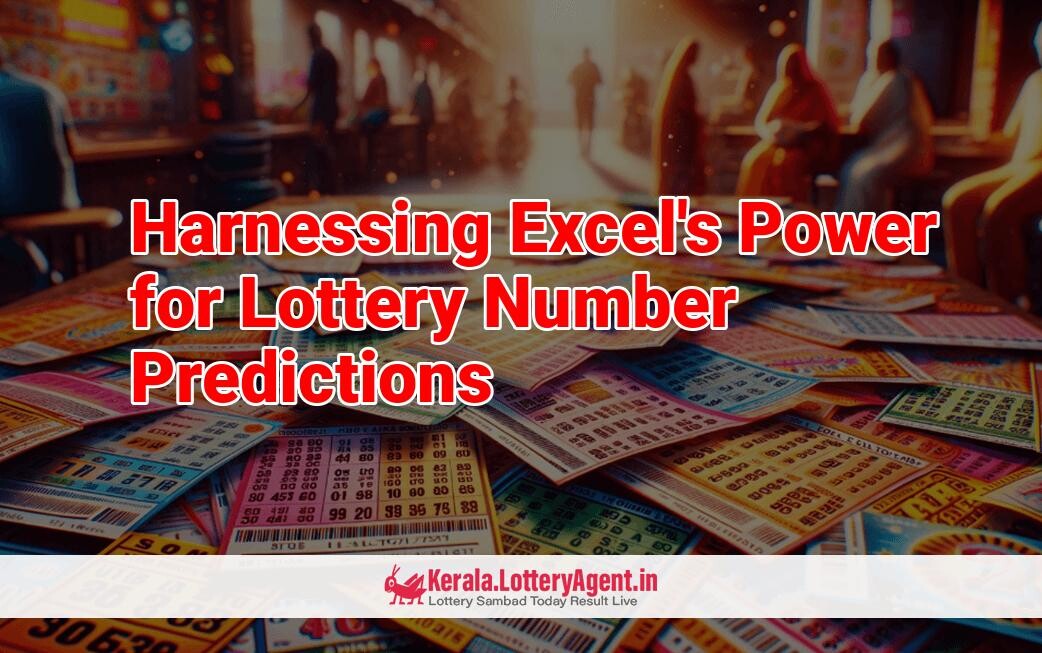
If you’ve ever dabbled with Microsoft Excel, you might be aware of its extensive capabilities. It simplifies tasks for both novices and experts in mathematics, and quite interestingly, for lottery enthusiasts too. Excel can be harnessed to formulate lottery strategies and construct algorithms that randomly generate potential winning numbers for your lottery entries.
Before diving into the how-to, let’s get a critical point out of the way – no math wizardry or intricate Excel knowledge is required to create a lottery prediction algorithm. Our specialists have put together a beginner-friendly guide that provides a quick and enjoyable way to take advantage of Excel’s lottery prediction functions. Let’s delve into the full details on lottery prediction algorithms, complete with an easy-to-follow, step-by-step tutorial on developing them.
Principally, a lottery prediction algorithm is a complex system that employs a vast array of numbers to assist in selecting the optimal lottery combination. Imagine commanding Excel to analyze thousands or even millions of numbers, and based on this immense data analysis, the algorithm then predicts the numbers that are most probable to appear next.
These excel prediction algorithms can be applied to almost any lottery game available. They are not only helpful for picking numbers for a simple ticket but also for more sophisticated play systems. Moreover, many users prefer them over traditional lottery strategies because they are fun, free of charge, and simple to use.
However, it’s paramount to note that lottery prediction algorithms do not ensure victory. Given that the lottery is fundamentally a game of chance, no tactic or algorithm can predict the winning numbers with absolute certainty. Wins are purely down to luck.
Instructional videos abound on how to devise lottery prediction algorithms, and advanced Excel skills are not a prerequisite for crafting them. With just the Excel software and our guide, you can deploy this algorithm for your next lottery outing.
The process kicks off by opening a blank Excel document. Though saving the document is optional, you could consider personalizing it with a unique title or color-coding for easy navigation. Initially, keep the A and B cell rows empty. In cell “A1”, enter “1”, followed by “2” in cell “A2”, and then proceed to drag the fill handle down to cell “A69,” which assumes you’re playing the US Powerball with 69 balls in its main drum.
The next move involves employing a function that aids in predicting the upcoming draw’s numbers. Enter the following in cell “B1”:
=COUNTIF($U$71:$AO$6000,A1)
After applying this function to the entire B-row, all values should initially read “0.” You then enable conditional formatting to highlight cells with above-average occurrences of numbers.
Fast forward to cell “U70,” where a RANDBETWEEN function, ranging from 1 to 69, will generate a random number. Once done, select a large swath of cells from U71 to AO6000 and paste the formulas to populate cells with random integers between 1 and 69.
With these steps, you’ll have created over 120,000 randomized numbers. Next, paste these as static values to prevent continuous recalculation upon any sheet edits.
Head back to the B-row, and you’ll witness the workbook has calculated and highlighted the frequency of each number. The final steps involve repeating the process, this time using only highlighted numbers. Eventually, this recursive methodology distills your selection down to your final ticket numbers.
And there you have it—an entertaining method of generating randomized numbers for your ticket. The probability of hitting the same numbers again is infinitely small, and the joy of this algorithm is that it’s universally applicable to any lottery – just be sure to adjust the number range conforming to particular lottery rules.
For those needing assistance creating the algorithm, our template might prove to be a handy starting point. And when you’ve honed your numbers, be sure to use reputable lottery sites like theLotter or Lotto Agent for an exceptional lottery experience.
While lottery prediction algorithms can’t promise a win, they can add a layer of intrigue and a sense of personal analysis to the process. It might just imbibe a little more optimism in your lottery endeavours. Who knows, maybe luck will be on your side when those numbers roll out!











